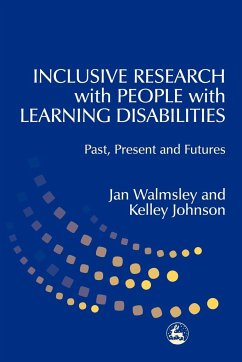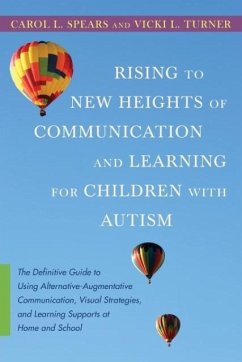- Broschiertes Buch
- Merkliste
- Auf die Merkliste
- Bewerten Bewerten
- Teilen
- Produkt teilen
- Produkterinnerung
- Produkterinnerung
A practical guide for those working with patients, this book will assist students in settling into their early placements and form a useful reference for those with more experience. Each chapter includes lists of questions which need to be borne in mind when approaching such topics as what is the reason for referral, what exactly is troubling the patient, what is the relevance of family or personal background, and what is the diagnosis, treatment plan and potential outcome. The book draws on anthropological and biographical as well as medical models, stresses ways of bridging the humanist and…mehr
Andere Kunden interessierten sich auch für
![A Practical Guide to Forensic Psychotherapy A Practical Guide to Forensic Psychotherapy]() Cleo Van VelsenA Practical Guide to Forensic Psychotherapy43,99 €
Cleo Van VelsenA Practical Guide to Forensic Psychotherapy43,99 €![Clinical Case Management Clinical Case Management]() Robert W. Surber (ed.)Clinical Case Management126,99 €
Robert W. Surber (ed.)Clinical Case Management126,99 €![Realizing the College Dream with Autism or Asperger Syndrome Realizing the College Dream with Autism or Asperger Syndrome]() Ann PalmerRealizing the College Dream with Autism or Asperger Syndrome21,99 €
Ann PalmerRealizing the College Dream with Autism or Asperger Syndrome21,99 €![Inclusive Research with People with Learning Disabilities Inclusive Research with People with Learning Disabilities]() Jan WalmsleyInclusive Research with People with Learning Disabilities42,99 €
Jan WalmsleyInclusive Research with People with Learning Disabilities42,99 €![Practical Approaches to Dramatherapy Practical Approaches to Dramatherapy]() Madeline Andersen-WarrenPractical Approaches to Dramatherapy37,99 €
Madeline Andersen-WarrenPractical Approaches to Dramatherapy37,99 €![Music and People with Developmental Disabilities Music and People with Developmental Disabilities]() F. W. SchalkwijkMusic and People with Developmental Disabilities37,99 €
F. W. SchalkwijkMusic and People with Developmental Disabilities37,99 €![Rising to New Heights of Communication and Learning for Children with Autism Rising to New Heights of Communication and Learning for Children with Autism]() Carol L. SpearsRising to New Heights of Communication and Learning for Children with Autism24,99 €
Carol L. SpearsRising to New Heights of Communication and Learning for Children with Autism24,99 €-
-
-
A practical guide for those working with patients, this book will assist students in settling into their early placements and form a useful reference for those with more experience. Each chapter includes lists of questions which need to be borne in mind when approaching such topics as what is the reason for referral, what exactly is troubling the patient, what is the relevance of family or personal background, and what is the diagnosis, treatment plan and potential outcome. The book draws on anthropological and biographical as well as medical models, stresses ways of bridging the humanist and scientific approaches, and emphasizes the value of the patient (as well as the therapist) discovering his or her own story.
Produktdetails
- Produktdetails
- Verlag: Jessica Kingsley Publishers, Ltd
- Seitenzahl: 128
- Erscheinungstermin: 1. Januar 1993
- Englisch
- Abmessung: 234mm x 156mm x 7mm
- Gewicht: 207g
- ISBN-13: 9781853021824
- ISBN-10: 1853021822
- Artikelnr.: 23588143
- Herstellerkennzeichnung
- Libri GmbH
- Europaallee 1
- 36244 Bad Hersfeld
- gpsr@libri.de
- Verlag: Jessica Kingsley Publishers, Ltd
- Seitenzahl: 128
- Erscheinungstermin: 1. Januar 1993
- Englisch
- Abmessung: 234mm x 156mm x 7mm
- Gewicht: 207g
- ISBN-13: 9781853021824
- ISBN-10: 1853021822
- Artikelnr.: 23588143
- Herstellerkennzeichnung
- Libri GmbH
- Europaallee 1
- 36244 Bad Hersfeld
- gpsr@libri.de
Robin Higgins, MB BCh, DPM, BMus, is a consultant child psychiatrist (retired). He has worked with the Laban Centre and Goldsmiths College and his continuing interest is in the arts therapies.
Some preliminary questions I: THE IDIOM OF CASE-STUDY (1). 1. The Case as
the Unit of Accountability. 2. The Patient and the Case. 3. The Case as
Person and/or Situation. 4. Roles and Relations. 5. A Practical Exercise in
Exploring Roles. 6. Orientation. 7. The Case as a Unique Instance or
Example of a Generality. 8. Essential Patterns in a Case-study. II: THE
REFERRAL. Some questions to be asked before the patient is seen. 9. Being
Forewarned: Advantages and Disadvantages. 10. The Referral Letter and Other
Sources of Pre-meeting Knowledge. 11. The Sharing of Anxieties. Some basic
questions about the interview. 12. The Interview. 13. Data and Relations.
14. Fact, Inference and Verification. 15. Verbatim and Remembered Report.
16. Transference and Counter-transference. 17. Un-history. III: THE
COMPLAINT. Questions for eliciting complaints from the patient and others.
18. Viewpoints in Complaints. 19. The Occurrence of Illness. 20.
Information Given and Withheld. IV: THE FAMILY HISTORY. Questions for
constructing a family tree. 21. Family and Genetics. Questions for setting
a patient in a cultural background. 22. Family and Culture. 23. Family
Crises. V: THE PERSONAL HISTORY. Key questions for assessing the nature of
each developmental phase in the patient's life. 24. Developmental Phases:
Foetal Life; Birth; Infancy; the Toddler; School and Latency; Adolescence;
the Middle Years; the Third age; old age. Questions for mapping the
patient's personality. 25. Personality: the Nomothetic Measures; Unique
Adaption. VI: PATTERNS OF PROGRESS. Questions about sequential patterns.
26. Transformation. 27. Ups and Downs. 28. Forwards and Backwards. 29.
Repetition and Variation. 30. Symmetry and Inversion. 31. Paradox. 32.
Mirroring. VII: FORMULATIONS. Questions about classifications and treatment
plans. 33. Diagnosis, Differential Diagnosis, and Prognosis. 34. Medical
Diagnostic Classifications. 35. Classification of Psychological Disorders.
35. Treatment Plans. 36. Initial and Final Formulations. VIII: CASE-STUDY
AND RESEARCH. Questions for the setting-up and testing of hypotheses in a
case-study. 37. Meaning and Cause. 38. Basic Concepts in Research:
Variables and Hypotheses Including the Null Hypothesis and Chance;
Populations and Samples; Frequency and Distribution; Univariate and
Multivariate Analysis; Correlation Coefficients; Regression Lines;
Associations and Cause. 39. Single Case Research. 40. Phases in Research
Projects. IX: THE IDIOM OF CASE-STUDY (2). Questions about the final form
of the case-study. 41. More on Transformation. Communication Through the
Medium. 42. Media and Modes. 43. The Story-line. 44. Case-study and
Biography: Truth as Fact and Truth as Fiction; Example; Confidentiality.
45. Genre and Diagnosis. References. Index.
the Unit of Accountability. 2. The Patient and the Case. 3. The Case as
Person and/or Situation. 4. Roles and Relations. 5. A Practical Exercise in
Exploring Roles. 6. Orientation. 7. The Case as a Unique Instance or
Example of a Generality. 8. Essential Patterns in a Case-study. II: THE
REFERRAL. Some questions to be asked before the patient is seen. 9. Being
Forewarned: Advantages and Disadvantages. 10. The Referral Letter and Other
Sources of Pre-meeting Knowledge. 11. The Sharing of Anxieties. Some basic
questions about the interview. 12. The Interview. 13. Data and Relations.
14. Fact, Inference and Verification. 15. Verbatim and Remembered Report.
16. Transference and Counter-transference. 17. Un-history. III: THE
COMPLAINT. Questions for eliciting complaints from the patient and others.
18. Viewpoints in Complaints. 19. The Occurrence of Illness. 20.
Information Given and Withheld. IV: THE FAMILY HISTORY. Questions for
constructing a family tree. 21. Family and Genetics. Questions for setting
a patient in a cultural background. 22. Family and Culture. 23. Family
Crises. V: THE PERSONAL HISTORY. Key questions for assessing the nature of
each developmental phase in the patient's life. 24. Developmental Phases:
Foetal Life; Birth; Infancy; the Toddler; School and Latency; Adolescence;
the Middle Years; the Third age; old age. Questions for mapping the
patient's personality. 25. Personality: the Nomothetic Measures; Unique
Adaption. VI: PATTERNS OF PROGRESS. Questions about sequential patterns.
26. Transformation. 27. Ups and Downs. 28. Forwards and Backwards. 29.
Repetition and Variation. 30. Symmetry and Inversion. 31. Paradox. 32.
Mirroring. VII: FORMULATIONS. Questions about classifications and treatment
plans. 33. Diagnosis, Differential Diagnosis, and Prognosis. 34. Medical
Diagnostic Classifications. 35. Classification of Psychological Disorders.
35. Treatment Plans. 36. Initial and Final Formulations. VIII: CASE-STUDY
AND RESEARCH. Questions for the setting-up and testing of hypotheses in a
case-study. 37. Meaning and Cause. 38. Basic Concepts in Research:
Variables and Hypotheses Including the Null Hypothesis and Chance;
Populations and Samples; Frequency and Distribution; Univariate and
Multivariate Analysis; Correlation Coefficients; Regression Lines;
Associations and Cause. 39. Single Case Research. 40. Phases in Research
Projects. IX: THE IDIOM OF CASE-STUDY (2). Questions about the final form
of the case-study. 41. More on Transformation. Communication Through the
Medium. 42. Media and Modes. 43. The Story-line. 44. Case-study and
Biography: Truth as Fact and Truth as Fiction; Example; Confidentiality.
45. Genre and Diagnosis. References. Index.
Some preliminary questions I: THE IDIOM OF CASE-STUDY (1). 1. The Case as
the Unit of Accountability. 2. The Patient and the Case. 3. The Case as
Person and/or Situation. 4. Roles and Relations. 5. A Practical Exercise in
Exploring Roles. 6. Orientation. 7. The Case as a Unique Instance or
Example of a Generality. 8. Essential Patterns in a Case-study. II: THE
REFERRAL. Some questions to be asked before the patient is seen. 9. Being
Forewarned: Advantages and Disadvantages. 10. The Referral Letter and Other
Sources of Pre-meeting Knowledge. 11. The Sharing of Anxieties. Some basic
questions about the interview. 12. The Interview. 13. Data and Relations.
14. Fact, Inference and Verification. 15. Verbatim and Remembered Report.
16. Transference and Counter-transference. 17. Un-history. III: THE
COMPLAINT. Questions for eliciting complaints from the patient and others.
18. Viewpoints in Complaints. 19. The Occurrence of Illness. 20.
Information Given and Withheld. IV: THE FAMILY HISTORY. Questions for
constructing a family tree. 21. Family and Genetics. Questions for setting
a patient in a cultural background. 22. Family and Culture. 23. Family
Crises. V: THE PERSONAL HISTORY. Key questions for assessing the nature of
each developmental phase in the patient's life. 24. Developmental Phases:
Foetal Life; Birth; Infancy; the Toddler; School and Latency; Adolescence;
the Middle Years; the Third age; old age. Questions for mapping the
patient's personality. 25. Personality: the Nomothetic Measures; Unique
Adaption. VI: PATTERNS OF PROGRESS. Questions about sequential patterns.
26. Transformation. 27. Ups and Downs. 28. Forwards and Backwards. 29.
Repetition and Variation. 30. Symmetry and Inversion. 31. Paradox. 32.
Mirroring. VII: FORMULATIONS. Questions about classifications and treatment
plans. 33. Diagnosis, Differential Diagnosis, and Prognosis. 34. Medical
Diagnostic Classifications. 35. Classification of Psychological Disorders.
35. Treatment Plans. 36. Initial and Final Formulations. VIII: CASE-STUDY
AND RESEARCH. Questions for the setting-up and testing of hypotheses in a
case-study. 37. Meaning and Cause. 38. Basic Concepts in Research:
Variables and Hypotheses Including the Null Hypothesis and Chance;
Populations and Samples; Frequency and Distribution; Univariate and
Multivariate Analysis; Correlation Coefficients; Regression Lines;
Associations and Cause. 39. Single Case Research. 40. Phases in Research
Projects. IX: THE IDIOM OF CASE-STUDY (2). Questions about the final form
of the case-study. 41. More on Transformation. Communication Through the
Medium. 42. Media and Modes. 43. The Story-line. 44. Case-study and
Biography: Truth as Fact and Truth as Fiction; Example; Confidentiality.
45. Genre and Diagnosis. References. Index.
the Unit of Accountability. 2. The Patient and the Case. 3. The Case as
Person and/or Situation. 4. Roles and Relations. 5. A Practical Exercise in
Exploring Roles. 6. Orientation. 7. The Case as a Unique Instance or
Example of a Generality. 8. Essential Patterns in a Case-study. II: THE
REFERRAL. Some questions to be asked before the patient is seen. 9. Being
Forewarned: Advantages and Disadvantages. 10. The Referral Letter and Other
Sources of Pre-meeting Knowledge. 11. The Sharing of Anxieties. Some basic
questions about the interview. 12. The Interview. 13. Data and Relations.
14. Fact, Inference and Verification. 15. Verbatim and Remembered Report.
16. Transference and Counter-transference. 17. Un-history. III: THE
COMPLAINT. Questions for eliciting complaints from the patient and others.
18. Viewpoints in Complaints. 19. The Occurrence of Illness. 20.
Information Given and Withheld. IV: THE FAMILY HISTORY. Questions for
constructing a family tree. 21. Family and Genetics. Questions for setting
a patient in a cultural background. 22. Family and Culture. 23. Family
Crises. V: THE PERSONAL HISTORY. Key questions for assessing the nature of
each developmental phase in the patient's life. 24. Developmental Phases:
Foetal Life; Birth; Infancy; the Toddler; School and Latency; Adolescence;
the Middle Years; the Third age; old age. Questions for mapping the
patient's personality. 25. Personality: the Nomothetic Measures; Unique
Adaption. VI: PATTERNS OF PROGRESS. Questions about sequential patterns.
26. Transformation. 27. Ups and Downs. 28. Forwards and Backwards. 29.
Repetition and Variation. 30. Symmetry and Inversion. 31. Paradox. 32.
Mirroring. VII: FORMULATIONS. Questions about classifications and treatment
plans. 33. Diagnosis, Differential Diagnosis, and Prognosis. 34. Medical
Diagnostic Classifications. 35. Classification of Psychological Disorders.
35. Treatment Plans. 36. Initial and Final Formulations. VIII: CASE-STUDY
AND RESEARCH. Questions for the setting-up and testing of hypotheses in a
case-study. 37. Meaning and Cause. 38. Basic Concepts in Research:
Variables and Hypotheses Including the Null Hypothesis and Chance;
Populations and Samples; Frequency and Distribution; Univariate and
Multivariate Analysis; Correlation Coefficients; Regression Lines;
Associations and Cause. 39. Single Case Research. 40. Phases in Research
Projects. IX: THE IDIOM OF CASE-STUDY (2). Questions about the final form
of the case-study. 41. More on Transformation. Communication Through the
Medium. 42. Media and Modes. 43. The Story-line. 44. Case-study and
Biography: Truth as Fact and Truth as Fiction; Example; Confidentiality.
45. Genre and Diagnosis. References. Index.








